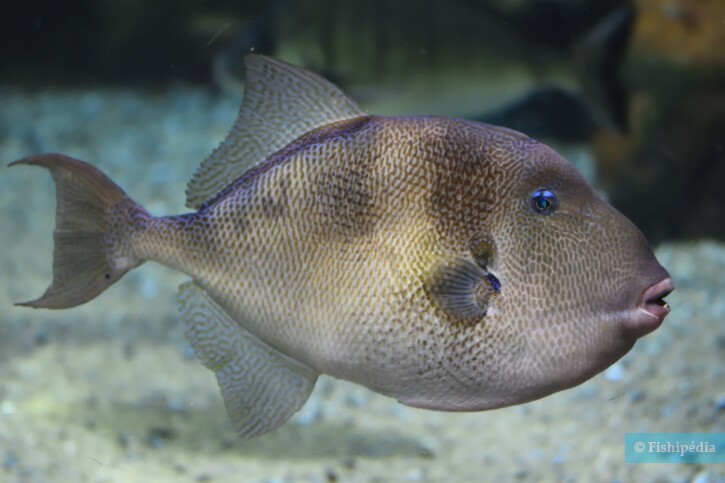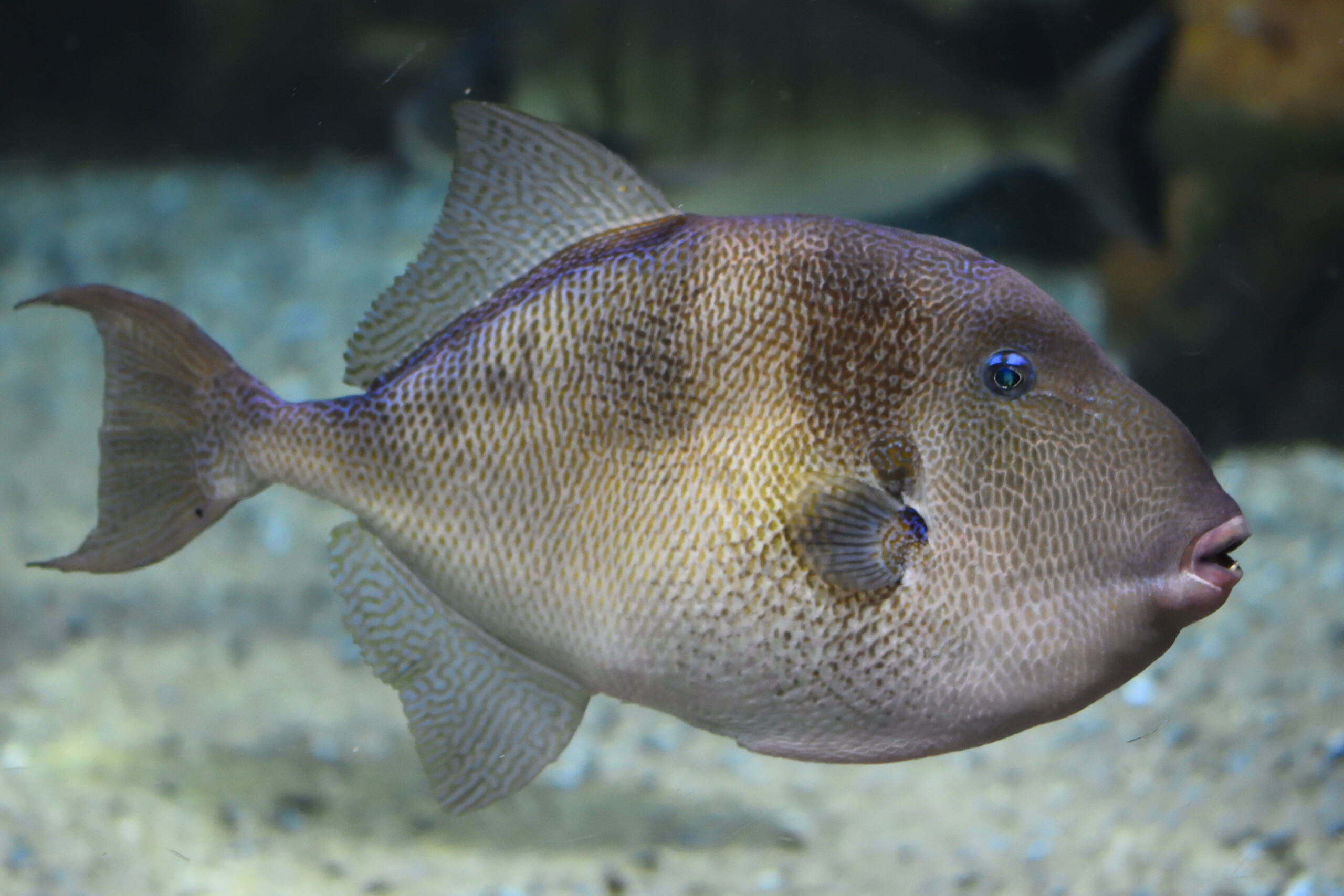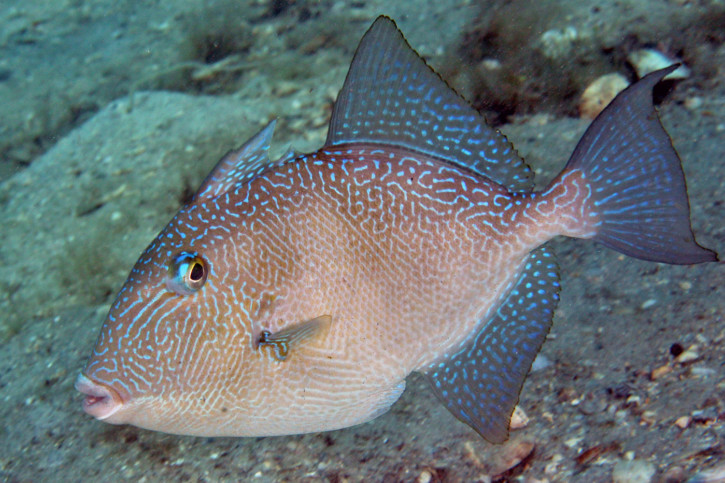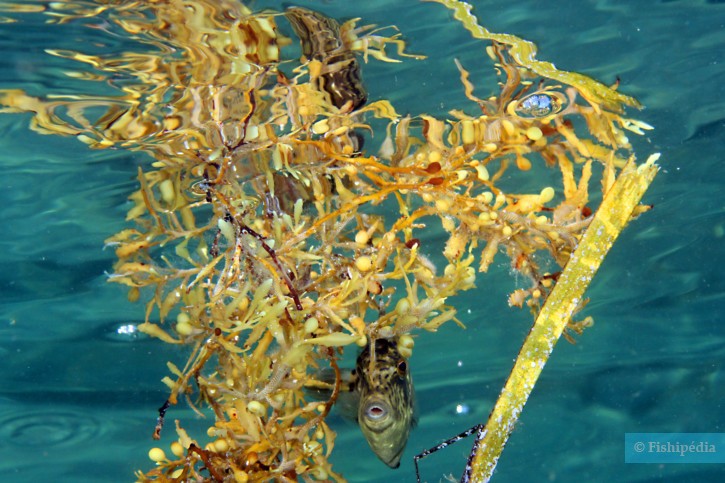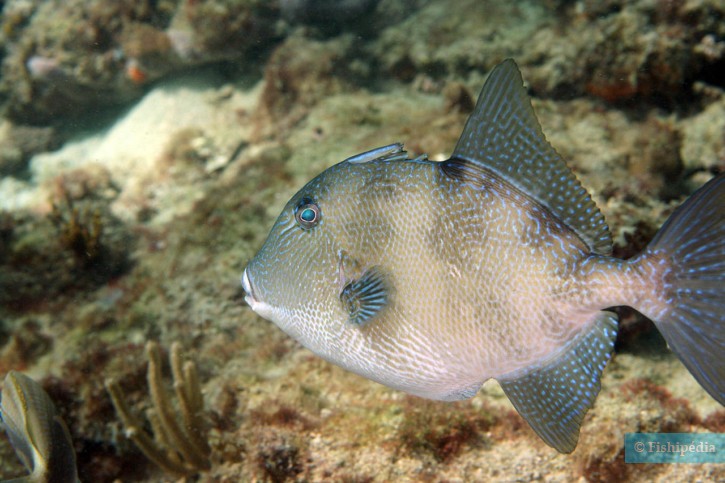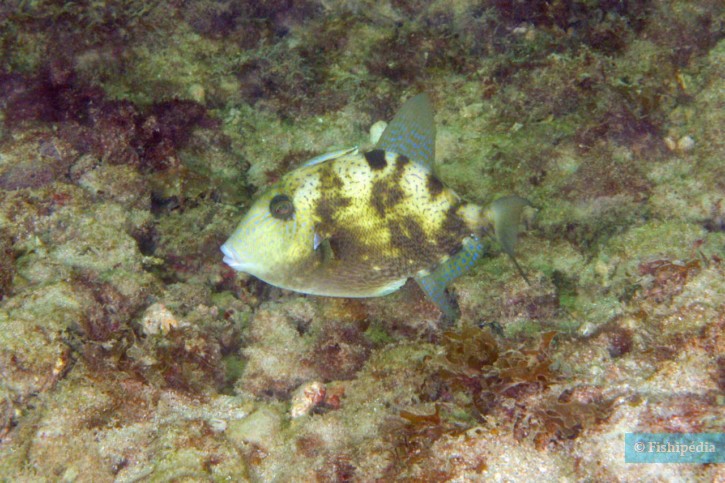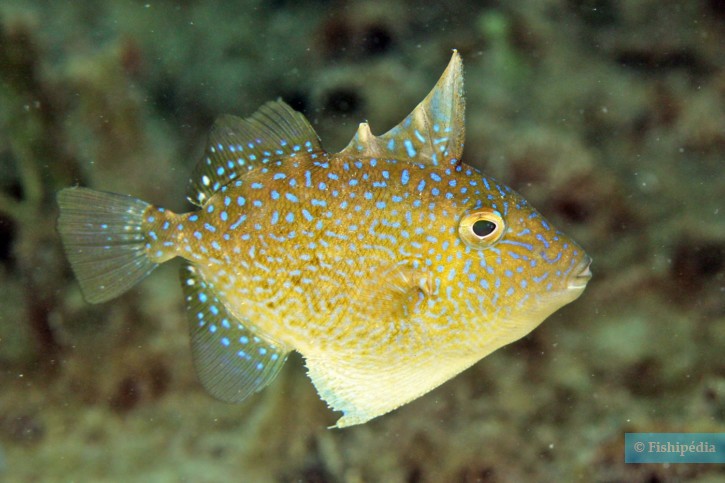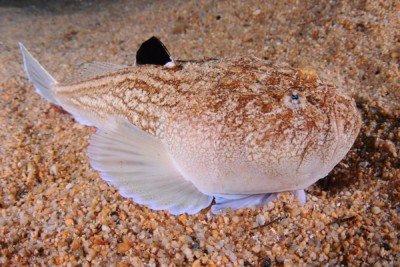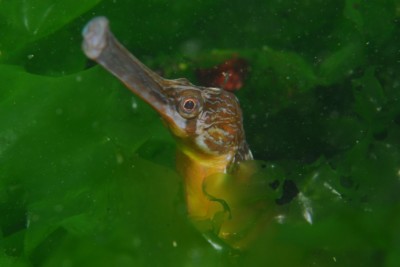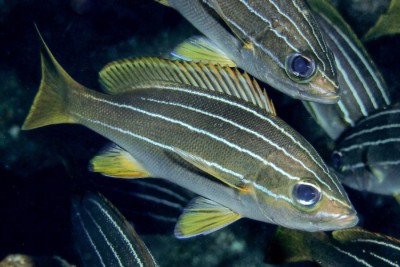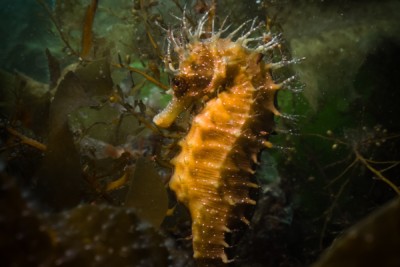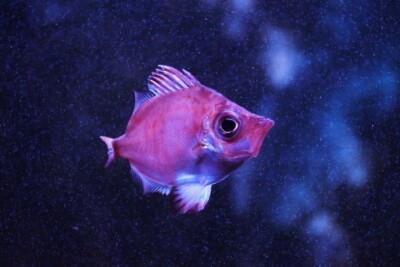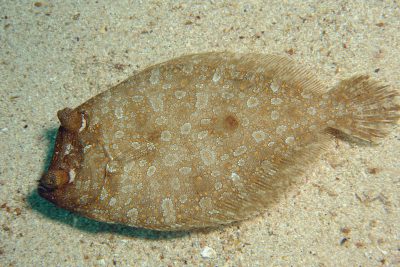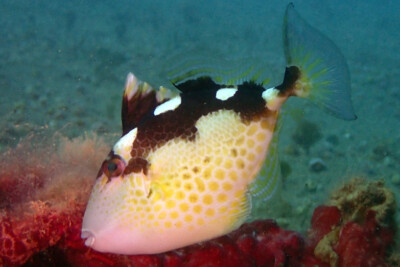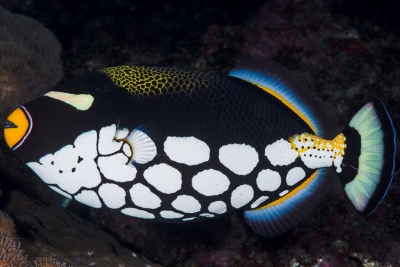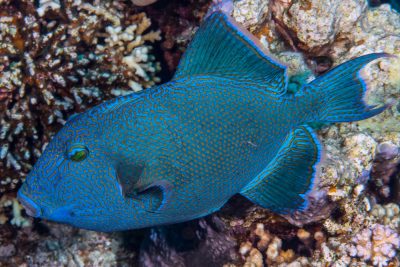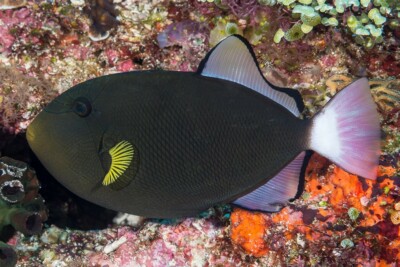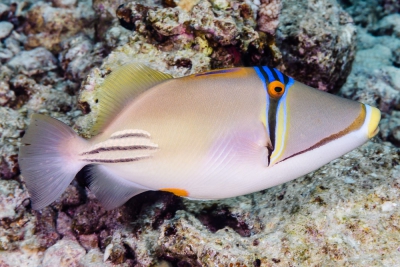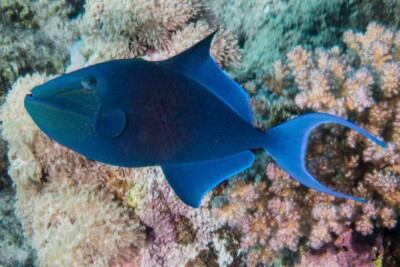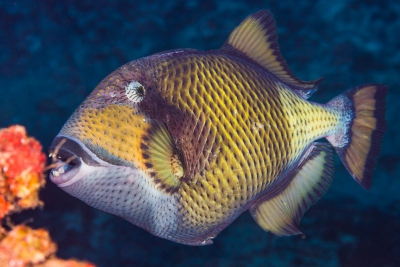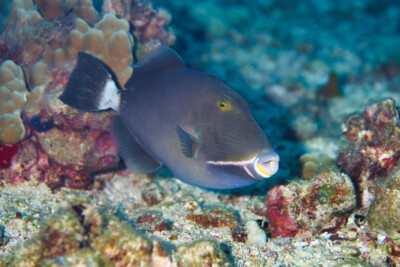Introduction
Balistes capriscus, also known as the "grey triggerfish", is a fish found from the Black Sea to the Caribbean Sea. It also resides off the Southeast coast of Brazil up to Canada. It is among the species with the widest distribution in the Atlantic region.
Little known in Europe, triggerfish are fish known for their flesh. They have been subject to historical intensive fishing in the Americas and near African coasts. Assessments conducted on stocks in Mexico have shown that catch rates induced by commercial and recreational fishing are unsustainable. Since a peak in catches dating back to 1990, populations have been declining.
Since 2015, the triggerfish has been considered "vulnerable" by the IUCN and these fish must be released in case of accidental capture.
On the French coast, they are found along the Mediterranean and in the Gulf of Gascony. Although rare, they are sometimes observed in Brittany where they have been the subject of sensationalist press articles. These articles mentioned the arrival of a tropical fish on French coasts. In truth, it had already been documented in the last century before almost disappearing. With warming waters, this hardy species could expand its range.
Despite their tropical affinity, they are part, along with the ornate wrasse and the redtail parrotfish, of native species in the Mediterranean Sea. Climate change appears to favor this trio, whose populations were once confined to the South and East Mediterranean areas. The ornate wrasse is now found in Corsica and in the French Riviera. In July 2020, a series of bites on French coasts could be attributed to triggerfish protecting their nest.
Who is it?
Morphology
-
Type
-
Average size44 cm
-
Maximum size66 cm
-
ShapeOval
-
Patternmottling
-
Type
-
Average size44 cm
-
Maximum size66 cm
-
ShapeOval
-
Patternmottling
How to recognize This fish ?
The grey triggerfish has an oval-shaped body that is mostly grey. Brown marbling with a bluish sheen is sometimes visible on the flanks.
The eyes are small, independent, and located very high on the head.
The pectoral fins are short and transparent. The caudal fin is long and lyre-shaped. Like most triggerfish, the second dorsal fin and the anal fin are well developed and used for swimming.
Sexual dimorphism
Males are larger than females.
Behaviour & Life cycle
-
dietcarnivorous
-
Sociabilityliving in a group or alone
-
territorialNo
-
Way of livingdiurnal
Adults swim along the bottom, alone or in small groups, while juveniles are encountered near the surface. Their swimming can be energetic but these fish are generally calm. Outside the breeding season, they are mostly nocturnal and roam reefs in search of mollusks and crustaceans.
Balistes capriscus defends its territory and becomes aggressive during the breeding season.
Reproduction
-
Reproductionovipare qui pond sur substrat découvert
Triggerfish are known to protect their spawning and provide care. The female prepares a nest in the sand to deposit her eggs. These are incubated for 12 to 58 hours before being carried away by currents. Juveniles have an extended pelagic stage. They spend between 4 and 7 months at the surface, camouflaged in brown algae such as sargassum.
Males and females reach sexual maturity at the same size: 25 centimeters. Males reach maturity at one year, whereas females take two. In the Mediterranean Sea and the Gulf of Mexico, the breeding season is from May to August. In West Africa, it occurs between October and December, and in Brazil between November and February.
Risks for humans
-
VenomousNo
-
BiteYes
Triggerfish are known for their spirited behavior, especially during the breeding season. They are not venomous like weevers, rays, and scorpionfish, but they may deliver small bites, similar to the larger piranhas. They are less aggressive than their tropical cousin titan triggerfish.
The bites and nips are harmless to swimmers, but can be problematic during dives. It has been known for triggerfish to break the masks of experienced divers at significant depths. Additionally, triggerfish defend a conical territory from their nest, vertically. Ascending directly above a nest will not deter the triggerfish from its attack. It is necessary to move away to the side.
Origin and distribution
Geographic distribution & Conservation
The species is present in almost the entire Atlantic Ocean. Once very common, triggerfish are now threatened by overfishing across much of their range. In several regions, they are captured before having the opportunity to reproduce.
Scientists estimate a 63 to 68% decline in the population over three generations, across 25 to 75% of their range (Gulf of Mexico, Gulf of Guinea, and Brazil).
Gulf of Mexico, United States:
This species was a major fishery resource during the 1980s and 1990s in Texas, Mississippi, Alabama, Louisiana, and Florida. Since 1990, and especially after 1993, populations have been in constant decline. Conservation plans were implemented, but as of 2014, there were no clear signs of recovery.
Southern Gulf of Mexico:
There is little statistical data on this region. Triggerfish appear to be less abundant and are mainly targeted by artisanal fisheries, particularly in the Caribbean. Large-scale studies are lacking to assess stock levels.
Northwest Atlantic Coast:
In this region, the species is not targeted by industrial or semi-industrial fisheries. However, the bycatch rate has decreased fivefold since the 1970s, suggesting a population decline.
Brazil:
The situation along the South American coast is among the most concerning. Exploited since the 1960s off the coast of São Paulo state, the triggerfish was initially caught as miscellaneous fish. It began to be intensively fished during the 1990s and 2000s, becoming one of the main fishery resources in the state of Espírito Santo before stock collapse led to its disappearance from the market. Gillnet fisheries, with mesh sizes smaller than the species’ reproductive size, are held responsible for this ecological disaster. Scientists estimate that nearly half of the fish caught were not sexually mature.
Southeast Atlantic and Mediterranean Coasts:
On the African side, after being the most fished species in the Gulf of Guinea for nearly 20 years, triggerfish populations also collapsed. After a golden age in the 1970s and 1980s, catches declined or even collapsed in Ghana, Togo, Sierra Leone, Côte d’Ivoire, and Cape Verde. In Côte d’Ivoire, this fish, which was very abundant in the 1980s, had almost disappeared by 1993. A second species, Balistes carolinensis, also saw its population decline due to overexploitation.
In Ghana, during 1979–1980, triggerfish made up 62% of the total biomass of demersal fish in coastal waters. In the 1980s, around 8,000 tonnes of triggerfish were caught annually in Ghanaian waters. In 1995, 2 tonnes were landed. More recently, the species may be starting to recover in Ghana and Sierra Leone, where it is now among the 20 most commonly encountered species.
Northeast Atlantic Coast:
Tunisia and Portugal were the top two countries for triggerfish catches between 1993 and 2009, with an average of 77 tonnes per year. In 2009, Libya caught 432 tonnes of triggerfish. In Ireland, an increase in catches was recorded between 1989 and 1991, which may correspond with the period when triggerfish were observed along the coasts of Brittany.
Conservation status of populations (IUCN)
What is its habitat?
Natural environment characteristics
-
Temperature18 - 24 °C
-
Depth1 - 100 m
Biotope presentation
Triggerfish are most often found between 10 and 50 meters deep. Adults frequent shallow coastal areas such as seagrass beds, coral reefs, or rocky bays. They can also be found in ports and estuaries.
Their many colorful relatives are frequent inhabitants of coral reefs.
Species of the same biotope
To go further
Sources & Contributions
Participation & Validation
The Fishipedia team and specialist contributors are committed to providing high-quality content. However, although the information comes from scientific sources or testimonials from specialists, the cards may contain inaccuracies.

Benoit Chartrer
Translation
Translation done with the valuable contribution of our translators, who make this information available to a wider audience. We sincerely thank them for their commitment.

Marine Kassel
Bibliographic references
- - GBIF
- - A new maximum length for the grey triggerfish, Balistes capriscus Gmelin, 1789 (pisces: Balistidae) from the Adriatic Sea - Dulčić Jakov - Alen Soldo - INSTITUTE OF OCEANOGRAPHYAND FISHERIES - SPLIT CROATIA - 2005.
- - Age, growth, and mortality of gray triggerfish (Balistes capriscus) from the southeastern United States - Michael L. Burton - Jennifer C. Potts - Daniel R. Carr - Michael Cooper - Jessica Lewis - NOAA - National Marine Fisheries Service - 2014.
- - The reproductive biology of the grey triggerfish Balistes capriscus (Pisces: Balistidae) in the Gulf of Gabe` s (south-eastern Mediterranean Sea) - Hichem Kacem - Neifar Lassâd - Marine Biological Association of the United Kingdom - 2014.
Scientific partners
Tags
#Balistidae
#Balistes
#barrière de corail
#fonds sablonneux
#herbier
#tombant
#Triggerfish
#Gulf of Mexico
#Caribbean Sea
#Mediterranean Sea
#Atlantic Ocean: North Coast of Brazil
#Océan Atlantique Est Afrique - Bengala
#Océan Atlantique Est Afrique - Golfe de guinée
#Temperate Eastern Atlantic Ocean
#Océan Atlantique Est Afrique - Transition & Cap Vert
#Eastern Cold Atlantic Ocean
#Cold temperate Northwest Atlantic Ocean
#Northwest warm temperate Atlantic Ocean
#Southwest warm temperate Atlantic Ocean
#Eastern tropical Atlantic Ocean
#Southwest Tropical Atlantic Ocean
#Canary Islands
Species of the same family
Species of the same biotope
